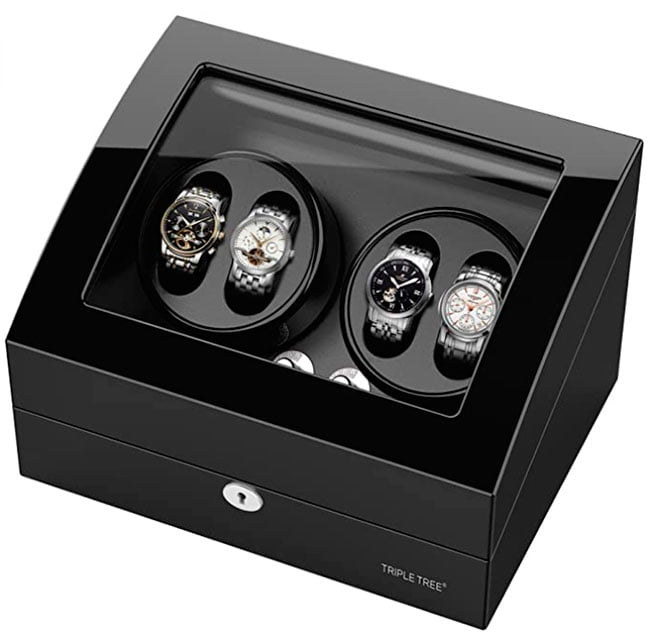Do you have some automatic (“self-winding”) watches? If so, you have probably run into a lot of references to watch winders. Is a watch winder a necessary accessory, or can you live without one?
In this article, we will explain to you what a watch winder is and what it is used for. We will then talk about situations where a winder might be useful. That way, you can make an informed decision regarding whether or not to buy one.
What is a Watch Winder?
The purpose of a watch winder is, naturally, to wind a watch, namely the automatic variety.
Automatic watches wind themselves when you are wearing them (some of them can also be wound manually, but in some cases it’s not recommended). They harness the motion of your wrist as you walk in order to swing a weight that in turn winds the watch.
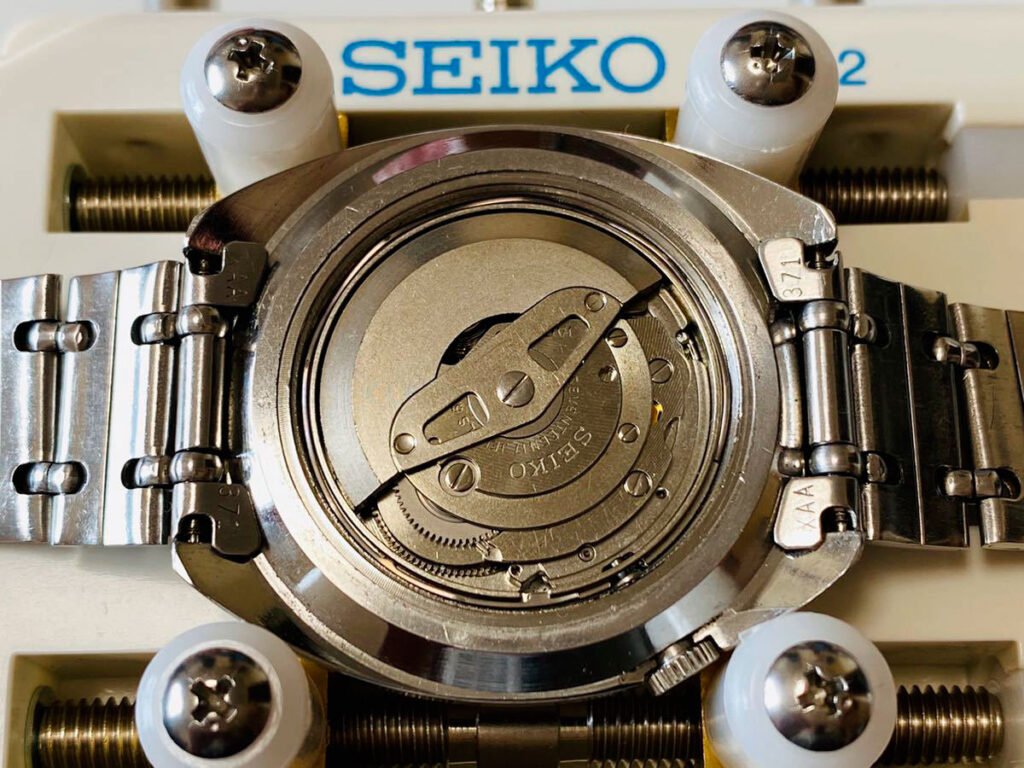
If you do not wear your automatic watch for some period of time, this feature does not function. So, the watch can require winding.
You then have two options. Either you can wind the watch by hand (assuming the movement allows it), or you can use a watch winder.
With a watch winder, you set the watch inside, and then the device rotates it. This motion substitutes for the movement of your wrist when you are not wearing your watch. Thus, it stays wound.
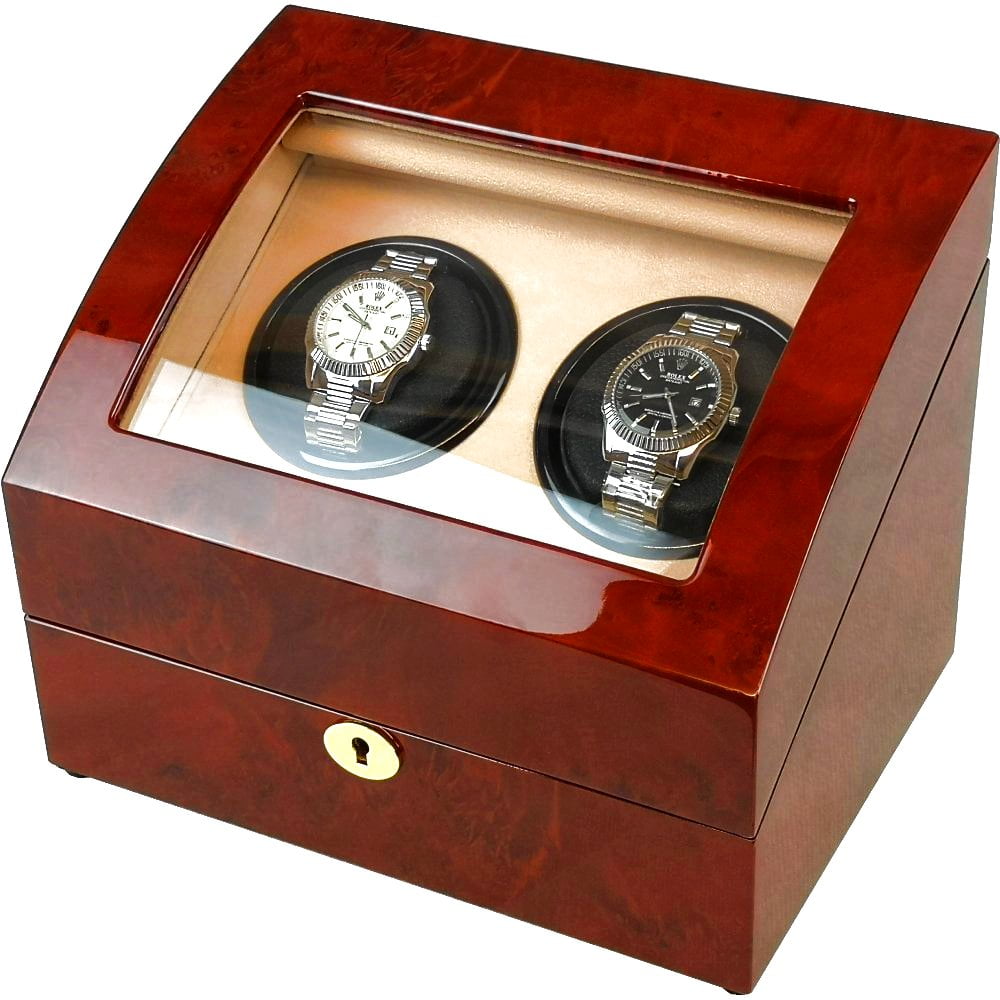
How long do you need to leave the watch in the winder for it to do its job? About half an hour should be sufficient (some winders can be programmed to only wind your watch for about half an hour / 24 hours).
Indeed, more than that is not a great idea. It isn’t that there is any risk of over-winding (there isn’t, just as there isn’t when you wear the watch). But the watch winder itself will function better for longer if you do not overuse it.
Plus, if you leave a watch in a winder too often for too long, the movement can also get worn down.
What a Watch Winder Doesn’t Do
A watch winder can wind your automatic watch, but one thing it cannot do is keep the mechanisms inside the watch lubricated.
There is a common misconception that if the movement is not running, the oils will coagulate, and you need a watch winder to prevent this.
But here’s the thing. Modern watches use synthetic oils. They are not prone to thickening in this manner.
Instead, what they do is simply evaporate. So yes, your movement will eventually get dry.
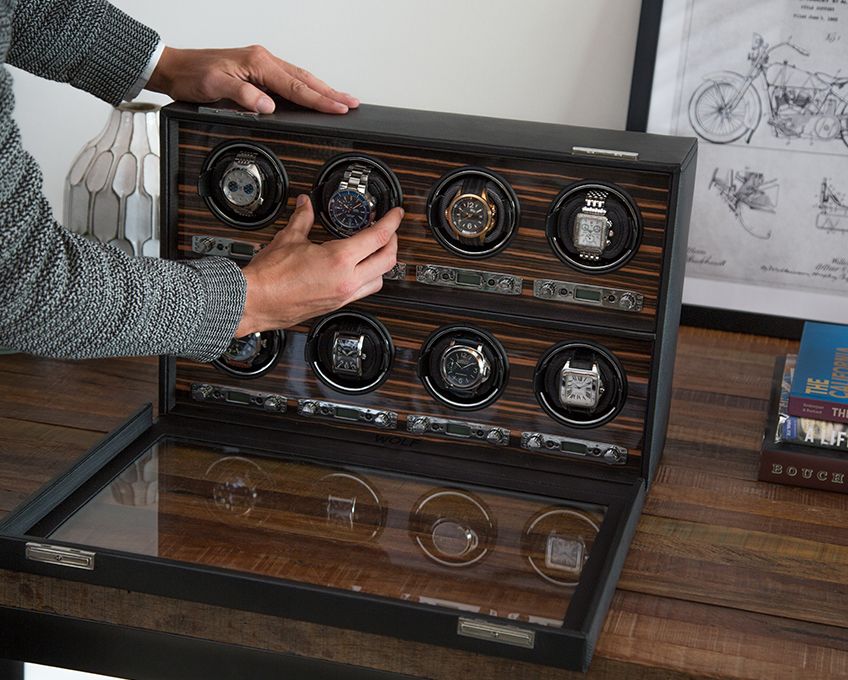
But can a watch winder prevent this from happening? Unfortunately, the answer is no.
So while this may have been a value of watch winders in the past, it isn’t really applicable in the present.
“But wait—I have a vintage watch,” you might point out. “Can’t the oils in that type of watch end up coagulating?”
The answer is, “Not if you have had it serviced.” It should have synthetic oil by now protecting the movement.
Pros of Using a Watch Winder
Here are some of the advantages of using a watch winder:
- Your automatic watch is wound for you without you needing to do the work of manually winding it yourself.
- You can save a lot of time winding a watch with a winder if it has complications (more on this later).
- Watch winders are pretty cool in and of themselves. Some of them have designs that are both aesthetically pleasing and interesting to watch in operation.
Cons of Using a Watch Winder
Here are some of the disadvantages of using a watch winder:
- If you overuse a watch winder, it is not good for the movement.
- Is your movement already dry? Using a watch winder with it could lead to damage.
- Watch winders cost a lot of money. Some of them cost less than $50, but many cost a few hundred dollars, and some will run you in the thousands of dollars.
Winders Are Designed for Watches You Wear Often
One of the main reasons most people won’t benefit from a watch winder is that it is designed for a “sweet spot” in terms of frequency of wear.
Let’s say you have an automatic watch you wear very frequently. Usually, it will wind itself using its automated function as you wear it. So, you will have no need for a winder.
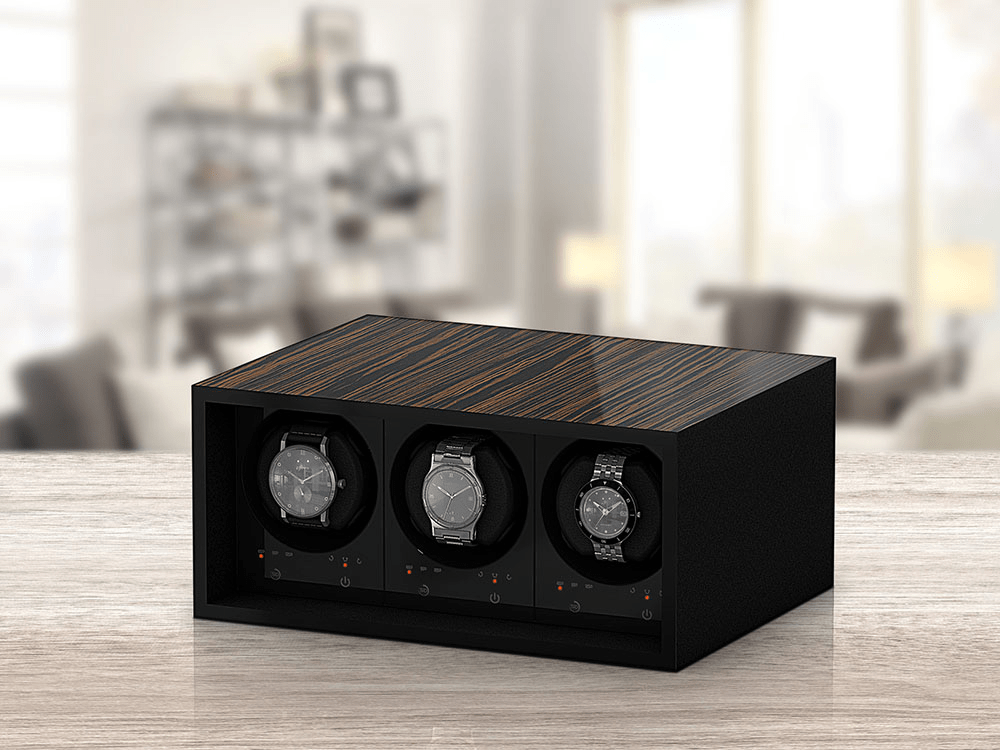
But say you have automatic watches that you very seldom wear. Knowing what you do now—that the oils will not coagulate if you leave them untouched—do you really feel a need to automatically wind them?
It isn’t really all that inconvenient to wind up an automatically winding watch manually once in a great while, after all.
So, you would really only find a watch winder particularly useful if you have automatic watches that you wear relatively often, but not frequently enough to keep them wound on your own through wear.
Situations Where a Watch Winder Could Come in Handy
So, now you know what a winder is and what it can do for you. We’ve also gone over some pros and cons. But do you need one?
Well, if your frequency of wear for some of your automatic watches rests in the “sweet spot” described above, one might be of some convenience for you.
But as we mentioned earlier, watch winders are most useful to those whose automatic watches include complications such as a perpetual calendar.
The process of winding and resetting such a watch manually can be involved, and it may be helpful to you to avoid it when you can.
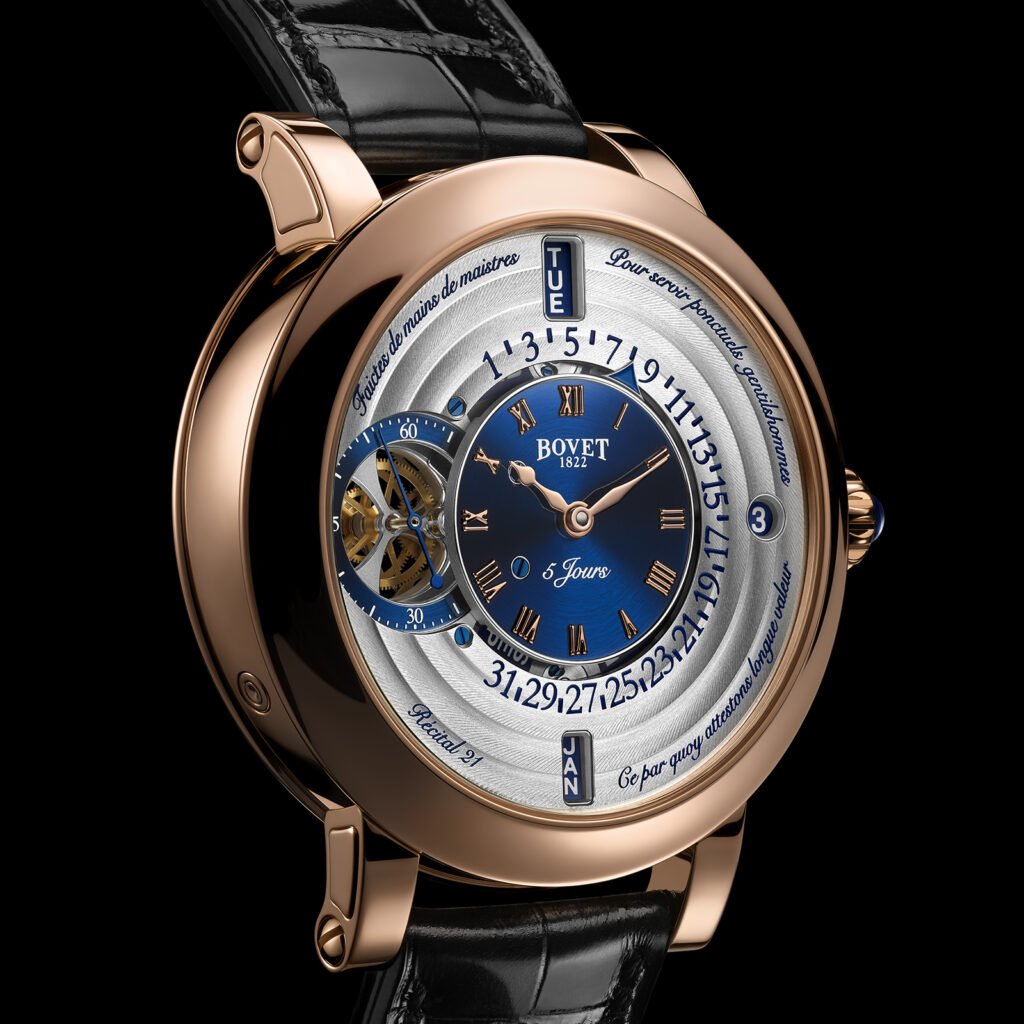
Another situation where this tool could be a big time-saver would be if you have a diver watch with a screw-down crown.
Having a watch winder saves you from the effort of screwing and unscrewing just to set the time.
Also, if there is no quick-set function for the date on your watch, a winder could be helpful.
Who Has No Use for a Watch Winder?
If you do not have an automatic watch to wind, you have no reason to consider getting a winder. A manually winding watch cannot be wound using this type of device.
Also, if you have a quartz watch – unless it’s the “kinetic” variation – a winder will not be useful.
If You Do Buy a Watch Winder …
If you decide that a watch winder is something you want, here are some recommendations for getting a good one:
- Choose a watch winder that sports more than one head. Why? Because even if you do not have more than one automatic watch that needs winding now, chances are you will eventually.
- Pick a winder that features movements that are not too repetitious (in order to avoid wear on the movement).
- Get a winder that is programmable. With this type of winder, you can tell it how many rotations it should run in a day and you can choose what time(s) you want it to run. That way, you do not have to manually turn your winders on and off to keep your watches properly wound while protecting your movements. You can “set and forget.”
- Make sure you are shopping for a winder that is quiet. This is worth paying extra for. Even though a cheap winder may save you money, you will pay for it with your eardrums every day.
Key Takeaways About Watch Winders
- Watch winders are devices that wind automatic watches for you when you are not wearing them.
- You can get watch winders that wind just one watch, or that wind multiple watches.
- It is best to program a winder to run only at specific times a day to protect your movements.
- If you wear your automatic watches frequently enough, you may not need a winder.
- If you wear your watches very infrequently, however, the occasional manual winding is not generally a big deal.
- You do not need a watch winder to protect your watches against coagulating oils, since synthetic oils do not coagulate.
- Watch winders are most useful for specific situations, i.e. if you have a watch that has a perpetual calendar.
Conclusion
So, is a winder necessary? Technically, no, you do not need a watch winder. Manually winding most watches is not all that tedious, and the synthetic oils used in watches today do not coagulate if the watches are not running.
Most collectors probably will not benefit all that much from a winder. But if the following apply, you might want to consider one:
- You have a small collection of automatic watches that you want to keep wound for your convenience.
- Some of your watches fit into one or more of the following categories: they feature complications such as perpetual calendar, they are divers with screw-down crowns, or they have no quick-set function for the date.
- You wear your watches reasonably often, but not so frequently that they stay wound from you wearing them.
- You like the aesthetics of a watch winder, and want to collect one for its own sake.
- You have the budget for a high-quality winder with programmable functionality.
That wraps it up! Feel free to get a watch winder if you want one. But don’t feel bad if you can’t afford one. You can get by just fine without one, and your automatic watches can too.
Further reading: more watch tools
Vintage Watch Inc
Dennis is the founder and editor of Vintage Watch Inc. Passionate about Soviet and Japanese vintage timepieces and a finance professional by day, he proudly wears a Seiko Pogue with his suit.


